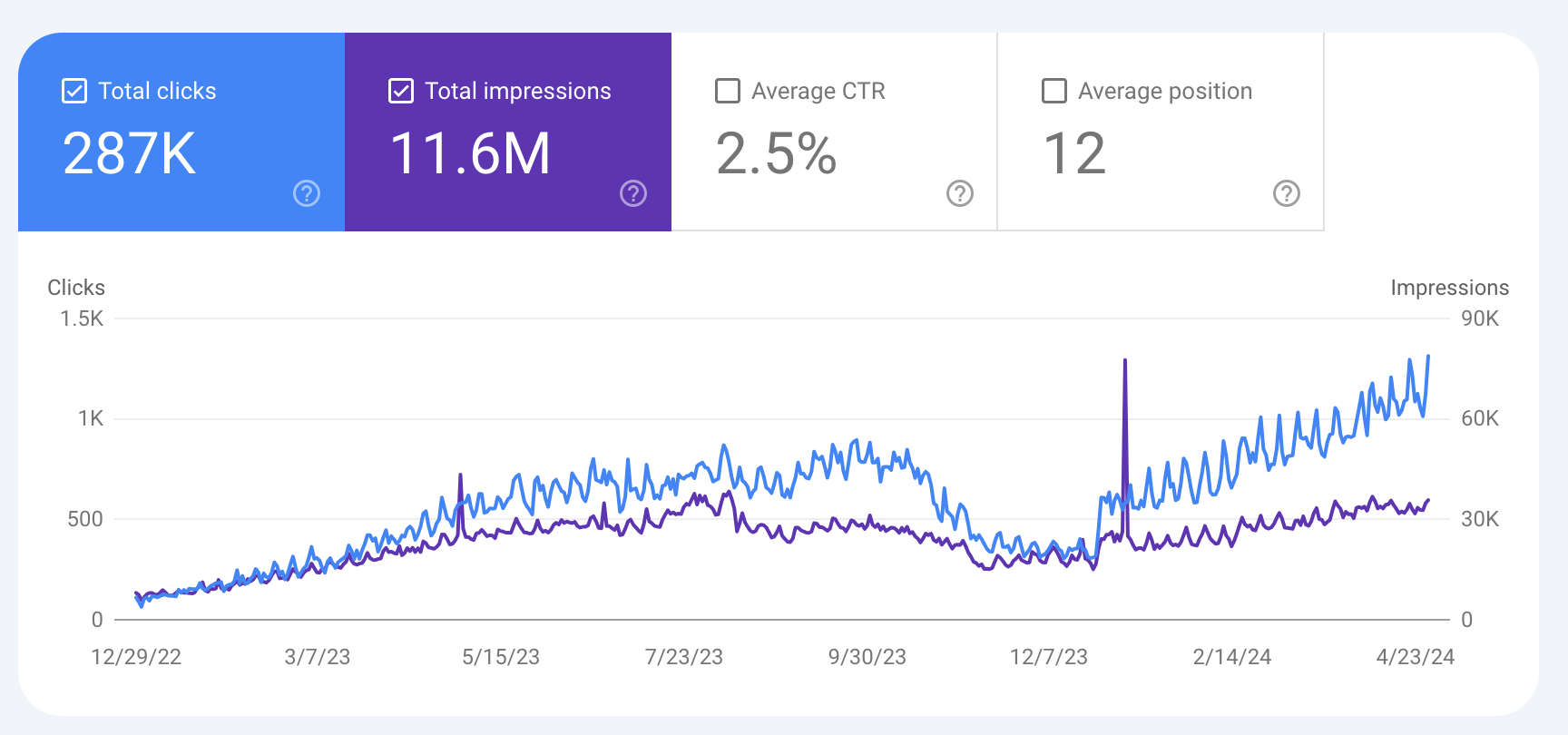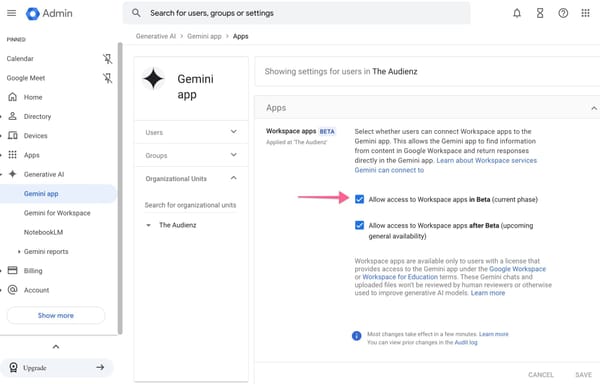Content Velocity: does your website needs it?

Content velocity is a metric that measures the rate at which you produce and publish new content over a given period.
-
When I first heard the "content velocity" term, I was confused and didn't know why it mattered.
After a few years, I concluded that content velocity is not always crucial.
I explain when it matters below.
But before that, let's understand why it matters: a higher content velocity signals to Google that your website is actively maintained and provides valuable, up-to-date information to users, which can positively impact your rankings and visibility.
But does it?
Not all industries or content are created equal. Content velocity has its place and moment.
When is "content velocity" NOT worth it?
As usual, I'll use my travel guides as an example.
For example, my Porto Travel Guide (Porto.travel) was published two years ago by my SEO Agency in Portugal (makes sense, right?!)
I bulk-published instead of holding a content velocity for a period of time. I only touch it to update prices and addresses if necessary. It could have more content, but it doesn't need to.

I could keep publishing content, and "increase" the content velocity further if I wanted.
It could be the go-to resource for the city—a "Time Out" kind of guide. I could update the website daily with events, new restaurants, music festivals, local markets, pop-up experiences, etc.
It could also bring me further benefits:
- Google Discover appearances
- Extra chances to get natural backlinks
- Bigger rankings overall
- More Impressions = More ads = More money
But that's not the aim of my travel guide. I just wanted to provide the first-time visitor with a simple scope of things to do with what I think is good in town while creating an income-generating asset that didn't take much of my time.
But why, you ask, didn't I pursue an expansion if it meant more money?
Well, the truth is with more content comes greater responsability.
As a single author writing that guide, more content means more maintenance.
This also means that to make the content creation effort worthwhile, I would need to attract more backlinks, spend more time curating content, etc.
So, in this particular case, it didn't make sense.
Actually, a throve of business categories won't benefit from achieving faster content velocity.
These are some of those:
Niche Audiences
The frequency of content might not need to be as high for very specialized topics where the audience is limited and highly specific.
Evergreen Content
If your content is evergreen—meaning it remains relevant and valuable over a long period—so it does not require frequent updates. You can add content when you feel like it. Such content can continue to attract traffic over time without regular additions (hello Porto Travel Guide!).
Constrained Teams
Smaller teams or individuals might be unable to produce content at a high velocity without compromising quality. Focusing on fewer, higher-quality pieces may be more effective in such cases.
Content Saturation
Adding more might not yield benefits in markets with a glut of content. Instead, differentiating your content through quality or unique perspectives can be more beneficial.
When do you want/need to see faster Content Velocity?
Don't get me wrong, Content Velocity is a tactic I recommend using. A lot. Heck, that's what my SEO agency does.
So, when do you need it?
Content velocity works for businesses that must spread their budgets over an extended timeframe. It also works for the initial stages of building a content team when you can't run as fast as your biggest competitor.
You need it if you work in the news industry, and it's definitely worth it if you face the industry's Goliaths.
If your competitor has 3,000 valid pages, unless you get very creative, you need to speed up your content production to catch up.
These are some of the niches where you most definitely need Content Velocity:
1. News and Current Events
This category requires a high velocity due to breaking news and ongoing stories. Media outlets must constantly update their content to provide the latest relevant information.
2. Technology and Gadgets
Tech enthusiasts and professionals seek the latest updates on new gadgets, software updates, tech industry news, and technological innovations. High content velocity helps capture the evolving tech landscape.
3. Health and Medical
New research, health crises (like pandemics), and medical innovations mean frequent updates help the public remain informed and safe.
4. Finance and Economics
The financial sector relies on timely information, including personal finance, stock market updates, and economic news.
5. Entertainment and Pop Culture
This includes movies, music, television, celebrity news, and lifestyle content. Those need updates as events happen and new trends emerge.
6. Sports
Sports reporting covers everything from game results and player trades to live event coverage and analysis, necessitating a rapid content refresh rate.
7. Fashion and Beauty
Trends in fashion and beauty change seasonally and even faster due to new designs, influencer impact, and industry events.
8. Food and Cooking
This includes the latest on restaurant openings, food trends, recipes, and diet tips, appealing to audiences looking for culinary inspiration.
9. Travel
Travel advisories, destination reviews, and tips are highly sought after, particularly as global conditions change.
10. Business and Marketing
Insights on business strategies, marketing trends, and industry analyses must be regularly updated to reflect the current business climate and innovations.
Ok, now that you've considered and want to make sure you measure for the right purpose. Let's dive into the measure part now.
So, you still want to learn how to measure Content Velocity
Why do you want to calculate content velocity?
Maybe you want to know how long it would take to get to the same point as your competitors and calculate how much of your budget you need. Or you just want to see how you're doing and how fast you've produced content.
This table might help you envision why you want to measure.
In this example, to cover the gap between your content production and your competitors:
| Metric | Competitor A | Your Business | Gap | Goal |
|---|---|---|---|---|
| New Blog Posts per Month | 10 | 5 | -5 | 8 |
| Average Word Count | 1,500 | 800 | -700 | 1,200 |
| Social Media Posts per Week | 14 | 7 | -7 | 10 |
In the above example, the analysis reveals that "Your Business" is lagging behind Competitor A regarding content output. Based on this analysis, the business can set realistic goals to increase its content velocity while also focusing on improving the quality and depth of its content.
But I diverted.
There are several methods and tools to calculate your content velocity.
One approach is to manually count the number of new pages, blog posts, or articles you publish within a specific timeframe.
Alternatively, you can leverage automated tools and software solutions like web crawlers, analytics platforms, and SEO tools.
Manual Calculation
Manual calculation is the easiest way to measure content velocity for smaller websites or those with a limited content library.
You just need to count the number of new pieces of content published and divided them through a specific timeframe, such as a week, month, or quarter.
Automated Calculation
For larger websites or those with a substantial content library, automated calculation using web crawlers, analytics platforms, or SEO software is a more efficient and scalable approach to measuring content velocity.
One popular tool for this task is Screaming Frog, a web crawler that can extract publish dates and other metadata from your website's pages.
Using Screaming Frog to calculate content velocity:
Here's a table outlining the key steps involved in using Screaming Frog to measure content velocity:
If you feel the need, this process can be repeated for your competitors' websites, allowing you to benchmark your content velocity against theirs and make data-driven decisions about your content strategy.
How to increase Content Velocity?
If you need to increase your content velocity, then you need to optimize for it.
Optimizing your content velocity is like fine-tuning a high-performance engine – it requires a combination of strategies and best practices to ensure everything is running smoothly and efficiently.
Last month, my SEO agency published around 200 articles. The way we do this without missing a beat is simple. We are very well prepared in advanced. And, we use plenty of automation tools, and AI SEO tools to help us deliver quality at scale. And no, we don't write a single line of content with AI. It's not worth it, yet.
Anyhow, at this point I should advice you with some of the key things you could consider:
Content planning
Build a content plan for your team. I like creating a Topical Map with Pillar Pages and Content Clusters paired with a good Content Calendar to ensure that your content production stays consistent and I get Topical Authority.
Once your content planning is set out, you want a content calendar your team can follow.
Then you'll want to create your SEO content briefs with something like swiftbrief.com to help you delegate the content production to your writers.
Content Calendars and Writing teams
Now, the time has come. The Editorial Calendar is ready! Hand each team member their own articles, with precise dates and ensure all is published when you need it.
Remember, a higher content velocity can lead to improved visibility, increased organic traffic, and better rankings for targeted keywords. But it's not just about churning out content for the sake of it – quality is still king when it comes to SEO.
Search engines want to see that you're consistently providing valuable, informative content that meets the needs of their users. If you start churning out crap, you'll probably won't get the rewards of Content Velocity.
Final thoughts on Content Velocity (for now)
Content velocity isn't always necessary—it depends on your website, business, competitors and what you want or need to achieve in that environment.
In fast-moving fields like tech or news, posting content often can help your SEO and keep your audience engaged by providing the latest updates. This frequent posting tells search engines and visitors that you're a go-to source for new information, which can increase your site's visibility and traffic.
However, publishing constantly might not be as important if your site focuses on topics that don't change much—like thorough travel guides or specialized academic content.
Your content's quality and lasting value can keep visitors returning without constant publishing. Also, if you're working alone or with a small team, trying to post frequently can be overwhelming and might lower the quality of your work.
It's crucial to match how often you post content with your goals.
More frequent posts can be vital if you're in a competitive industry or must keep up with rapid changes. Just make sure that you don't cannibalize or overoptimize your content.
But if you're in a stable field or have limited resources, focusing on fewer, better-quality posts could be more effective.
Knowing when to speed up or slow down your posting can help you stay on top and meet your audience's needs without burning out.




